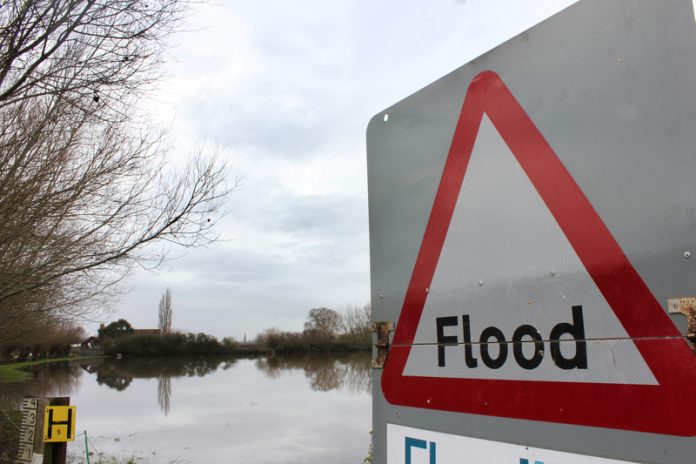Mary Dhonau, Chair of the Flood Protection Group at the PCA highlights the professional standards required to mitigate the impact of flooding
In the height of summer, flooding is often far from people’s minds – but it’s a subject we should never treat as a seasonal concern.
Some of the most catastrophic incidents have occurred in the summer season – including the Hull floods, which devastated the city in June 2007.
In this article, I set out some of the measures that can be introduced to reduce the impact of flooding on properties and the professional standards required to ensure a successful outcome.
I also discuss the need to drive forward a collaborative and joined up approach to the challenges faced by flooding, from the top down.
The Practical Approach
Flood protection can be improved in a number of ways, either by reducing the impact of future floods through resilience measures or by keeping water out as far as possible by introducing resistance features.
Flood resilience relates to any measures which reduce the time between the point the building is flooded and the point where the occupant can get back to the enjoyment of their property.
Measures which can be adopted in modern buildings or during the recovery or refurbishment of older buildings to provide degrees of resilience to the effects of flood water are numerous.
Some examples suggested for consideration by the PCA include replacing standard gypsum plaster with one of the alternative types that do not absorb water (such as a cement render) and using ceramic or stone tiles with waterproof adhesive and grout.
Moving all services, such as boilers, high up on the wall along with electric sockets, and using kitchens which can be cleaned, dried and reused using materials such as marine ply or steel, can also speed up recovery works.
The fitting of a membrane to walls and floors so any water can run behind it to be collected in a sump/pump unit rather than entering the property, is another effective measure.
Keeping water out as much as possible through flood resistance measures can be achieved in a number of ways too.
This can include fitting a flood protection guard to doors or replacing doors completely with a flood resistant alternative.
Replacing standard airbricks with ‘self-closing’ alternatives, fitting a ‘non-return valve’ to prevent sewage going back into the building and giving consideration to the fitting of a pump to evacuate water coming from beneath the building are other examples of flood resistance measures.
Professional standards
These flood resilience and resistance measures can all make a positive impact, but it is important to recognise that there’s no off-the-shelf solution for flood protection.
The introduction of effective measures involves looking at a property as a whole, understanding its needs and bringing together a solution that will work.
It requires a high level of technical ability, so property owners should seek out a professional who can adapt existing technologies and practices to deliver robust and reliable protection for homes and businesses at high risk.
The best way to ensure properties are as protected as they can be is to call in the experts.
Members of the PCA’s Flood Protection Group understand the subject of flooding and can provide expert help, advice and guidance on how homeowners and businesses can reduce the risk of problems.
The Group was created to provide a clear and trusted route to find contractors who really understand what they’re doing and who are each verified by a trusted trade body.
It works to a practical Code of Practice for the Flood Protection of Buildings, which provides guidelines that set the principles and standards to which members work.
The importance of a joined-up approach
Many of the measures discussed in this article represent, for building professionals, common sense methods of tackling the problem.
The key is to address how we think nationally to roll out these changes. The solutions are there; the challenge is to ensure their successful introduction.
We’ve worked on a number of initiatives including most recently the BRE Flood Resilient Repair Home. This is a demonstration property which has been adapted to be resistant to flooding from water up to 600mm (2 feet) deep, and also to be resilient to the effects of being flooded. It is made from a design that makes it quick to dry out and suitable to move back into in a very short time after a flood incident. It’s been very successful and proves the value of this approach.
However, there needs to be clear leadership from government to drive forward the issue of flood resilience and resistance.
Action on the ground can include allocating the use of any flood damage grants issued by the government to build in future flood protection rather than just a repair and replace process. Insurance repairs can also take the same approach.
And local communities can join forces to protect their homes, as a PCA video, which shows how flood resilience measures were introduced to properties in Oxfordshire.
More information on flood protection and flood resilience can be found via the PCA website.
| Mary Dhonau OBE has campaigned tirelessly for the last two decades to protect people from the heartache of flooding.
Recently Mary – who chairs the Property Care Association (PCA) Flood Protection Group – was awarded an honorary fellowship of the Chartered Institution of Water and Environmental Management (CIWEM) for her exceptional contribution in the field of water and the environment. |
Mary Dhonau OBE
Chair of the Flood Protection Group
Property Care Association
pca@property-care.org








![[VIDEO] UK-based firm reveals ‘world’s first’ fully AI-driven architectural project Studio Tim Fu has revealed the 'world's first' fully AI-driven architectural project in Slovenia, developing six luxury villas on the Lake Bled Estate](https://www.pbctoday.co.uk/news/wp-content/uploads/2025/03/Interior-1-studio-tim-fu-218x150.gif)





